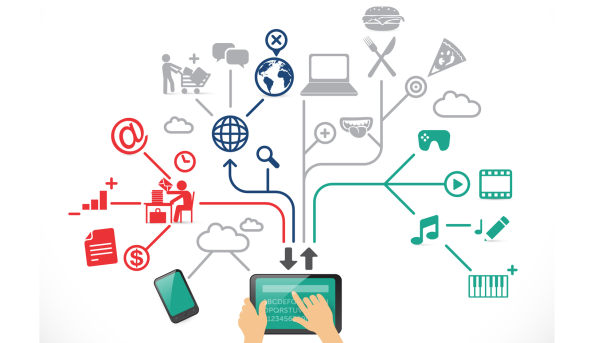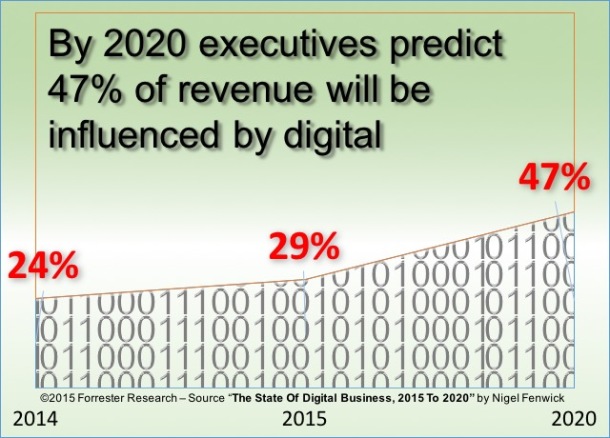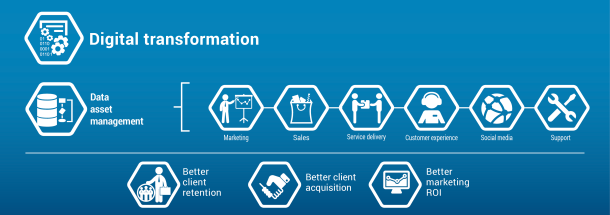In a world where generating sales leads is now the biggest challenge facing companies, could digital selling including social selling be the ultimate sales channel for the foreseeable future. In the digitally connected world, to attract buyers attention, a business has to develop trust, this means starting with authentic interactions and engaging on social media.

There are lots of definitions as to what “Digital Selling” actually entails, but the main point to get across is that digital selling is about creating cohesion between sales and marketing in the areas of content marketing, inbound marketing, social selling, data, social listening and insights which are mapped to the buyer’s journey. All these “online” elements when structured together can be used to create a Digital Selling strategy. It is not just about the sales team trying their luck with social selling or the marketing department producing a stream of content. To make it work, leaders must create an organisational structure around the social media channels and KPI’s to measure buyer engagement.
Many companies feel that in-house created content reach (views, likes, downloads) is the ultimate measure for buyer interest, however other measures like social reach, buyer connections, sales person profile/company page views, questions posed, questions answered and conversation engagement are other key measures worth considering. A key part of any Digital Selling strategy is everyone in sales and marketing should be involved in the creation, organising and sharing of content. To succeed with the socially influenced buyer, remember companies with the best stories shared will win. In a way, a business needs to have a publishing department, one that concentrates on creating volumes of content or research which is mapped to a buyer’s journey
Let’s take a deeper look at Digital Selling
Digital selling is the use of social selling (1:1 buyer engagement on social channels undertaken by sales people) combined with the use of digital assets (videos, articles, whitepapers, case studies, infographics, webinars, online presentations) and supported by sales intelligence (data, ideal customer profiles, insights, triggers, CRM, social listening) to generated leads and revenue.
In a way, digital selling could be termed “closed loop selling” as it about matching your sales strategy to buyer behaviour which we now know is increasingly influenced by social media. So in a way, it takes a holistic view of the buyers journey to bring together the assets and actions in order to be valuable to buyers on their journey, one that ultimately leads to better engagement and ultimately more sales.
There are many compelling reasons around this strategy, mainly driven by the fact that buyer behaviour has changed and there is no old way of doing things as most sales tactics such as cold calling have diminishing returns. Today’s connected buyer is more informed than ever before plus they have become expert at tuning out to all those interrupter sales strategies and tactics that worked so well in the past. They seek not to be sold to. They seek advice, knowledge, insights and someone to guide them to the right purchase decision.
The whole digital sales transformation is in full swing around us, whether it is inbound marketing, freemium models, social selling or consultative sales models, it is digital selling to step forward and take centre stage.
Digital selling is fast becoming main stream as forward thinking SaaS companies lead the way whilst many smaller or medium sized businesses must watch and learn fast.

So where does social selling fit in?
As I stated previously, Social Selling is the key sales person’s activity within Digital Selling. Again, there are many definitions but my own one is “Social selling is the sum of connected actions shared online when experienced by customers/potential customers will influence their awareness and consideration for your business.
It boils down to the influence an individual sales person can have on customers and prospects’, by sharing content on social networks which is consumed, shared, commented on and visible across multiple networks.
Sales teams deploy social selling as an activity that is proven to be valuable (sharing insights, articles, expert advice) to buyers as they move through the awareness, consideration and selection stages on the new buying journey via social media.
Social Selling uses three key elements: namely Insights, Triggers and Referrals to map the buyer’s journey, then supports these elements with articles, curated content, videos, whitepapers etc to engage a potential customer.
Summary:
A digital selling strategy acknowledges that the connected buyer needs education but they educate themselves. They have become blind to advertising and ignore slick marketing material. They value peer recommendations over sales jargon and they complete a large part of the buying process without sales interactions or taking calls. They want to be guided and expect insights from experts with an understanding of their business not yours.
So, pause, listen & engage to nurture relationships via social networks. Modern sales leadership know that the key to sustained success is to include digital selling alongside social selling and social media marketing so all departments and all employees can play their part in the online customer engagement process. When sales and marketing work together to engage someone from prospect to customer, the whole business from top to bottom can stay on the same page with critical contacts, conversations, conversions while measuring the resulting ROI. That is Digital Selling.
Is Digital Selling The Ultimate Sales Channel? – The Bitter Business




